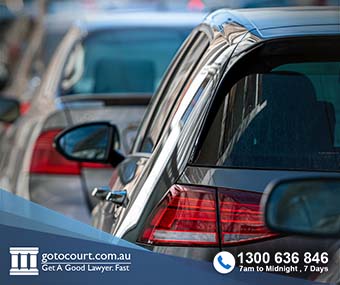Driver Duty of Care (ACT)
Driver Duty of Care (ACT)
All drivers in the ACT have a duty of care to other road users to try and avoid causing injury or harm through their actions or inactions. As such, drivers have a responsibility to protect other drivers, pedestrians and passengers on ACT roads. The discussion below addresses a driver’s duty of care in the ACT, with a focus on recent case law.
Driver duty of care in the ACT
The concept of a duty of care was articulated in the UK case of Donoghue v Stevenson [1932] as the obligation to “take reasonable care to avoid acts or omissions which you can reasonably foresee would be likely to injure your neighbour”. In the case of drivers, their “neighbours” are all other people who might be using the road. Drivers are not required to be faultless, but they are expected to act as another reasonably competent driver would in the same set of circumstances.
Driver negligence in the ACT
In some Australian jurisdictions, a person who sustains injury or damage as a result of a driver’s negligence can make a common law claim for compensation. In the ACT, the common law principle of duty of care has been codified in the Civil Law (Wrongs) Act 2002. Under this Act, a person can sue for personal injury, property damage or economic loss that results from a road accident caused by another person’s negligence. A successful claim under this Act can help a plaintiff pay past and ongoing medical expenses, and cover lost earnings if the accident makes it impossible to work for lengths of time. It is also possible to claim for pain and suffering if the plaintiff has continuing physical pain or psychological injury brought about by the driver’s negligence.
In order to secure compensation under the Act, the plaintiff must establish that the driver had a duty of care to them. This is usually an easy hurdle to clear, as all road users owe a duty of care to all other road users. The plaintiff must then establish that the driver failed to meet the minimum required standard of this duty of care. The central question in most negligence cases is whether the driver took reasonable measures to prevent other road users from being harmed.
Driver negligence
Certainly, a driver is negligent if they contravene the Road Rules by speeding, drink driving or hooning.
Additionally, a driver is in breach of their duty of care if they fail to:
- keep a standard distance from the vehicle ahead;
- drive to the conditions, regardless of any posted speed limit;
- signal before changing lanes or braking their vehicle; and
- stop at posted stop signs.
A major cause of road accidents is driver distraction. A driver has a duty of care to pay attention to the road, other drivers and the road conditions. There are so many distractions for a driver, such as texting, eating and changing the radio, that can take a driver’s attention off the road long enough to cause an accident.
Case study
In Steed v McDougall [2019], the ACT Supreme Court found a driver was negligent because he failed to keep a proper lookout. In this case, the driver breached his duty of care by not paying sufficient attention when reversing in his driveway. As a result of this lack of care, the driver collided with a postal worker on a motorcycle, causing personal injury to the rider. The Supreme Court found that the driver should have foreseen that an accident might occur because the path behind his driveway was used by pedestrians and motorcyclists (including postal workers). The standard of care required of the driver was, therefore, to take sufficient care to avoid injuring these road users. The Court found that the driver should have taken sufficient care to compensate for the fact that someone crossing the driveway may have their vision of oncoming cars obscured by tree foliage.
It is notable that the Court found the postal worker was contributorily negligent in the amount of 35% because he himself failed to keep a proper lookout. As this case shows, even if a person contributes to their own injuries, they can still recover against a driver who breaches their duty of care. A person who is contributorily negligent typically sees a proportionately lower entitlement than someone who was not at all to blame for their injuries.
Time limits
The Limitations Act 1985 sets a time limit to make a claim for negligence against a driver in the ACT. An action is not possible more than five years from the date of the motor vehicle accident. In addition, a claimant has filing and notice obligations that must be met soon after the incident. The most important message is that if you are injured, you should contact a solicitor for advice as soon as possible to discuss the next steps.
Please contact or phone our experienced team of solicitors if you have any questions about a driver’s duty of care in the Australian Capital Territory.

Affordable Lawyers
Our Go To Court Lawyers will assist you in all areas of law. We specialise in providing legal advice urgently – at the time when you need it most. If you need a lawyer right now, today, we can help you – no matter where you are in Australia.How It Works




1. You speak directly to a lawyer
When you call the Go To Court Legal Hotline, you will be connected directly to a lawyer, every time.

2. Get your legal situation assessed
We determine the best way forward in your legal matter, free of charge. If you want to go ahead and book a face-to-face appointment, we will connect you with a specialist in your local area.

3. We arrange everything as needed
If you want to go ahead and book a fact-to-face appointment, we will connect you with a specialist in your local area no matter where you are and even at very short notice.
















